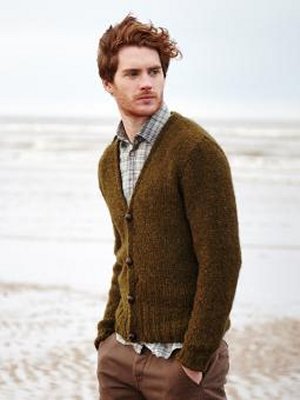It's third period, JBWU students, which means it is time for a social studies lesson. Here at Jimmy Beans Wool, we sell yarn from over 100 manufacturers, companies big and small. That's a lot of yarn, and it comes from a lot of places! Today, our lesson is on just that: where does the yarn come from? What makes it different from place to place?
Lots of yarn suppliers are very open about their yarn's origins. To list a few, we stock yarns that uses fibers from China (Cascade), South Africa (Madelinetosh), Italy (Berroco), New Zealand (Love Fest Fibers), Turkey (Universal Yarns), Uruguay (Manos del Uruguay, of course), Peru (Malabrigo), the United States (Lorna's Laces), and the UK (Rowan)! And that's just the beginning!
Suppliers get their yarns and fibers from all over the world, so while one Berroco yarn might be produced in Italy, another could be from Peru or Turkey. You can find this info right on our site:
But what is the difference between yarn from Turkey and yarn from China? Or South Africa? Or Peru?
It starts with the fiber. Last week we learned about fiber types: protein, plant and synthetic fibers. Today we'll focus on wool, which is just one of the types of protein fibers - others include alpaca, mohair, angora, silk, and cashmere, to name a few. Alpacas usually live in South America, mohair often comes from the Middle East, and lots of silk and angora is from Asia! While all wool comes from sheep, the kind of sheep and the place they live determines the quality of the wool yarn they produce. Not all breeds of sheep can live in all climates. All wool is measured by its staple, which is like a lock of hair. Staples are graded based on the length and fineness of the fibers.
 |
Merino Sheep
Photo: Wikimedia |
Far and away the most popular sheep's wool fiber is, of course, merino wool! The breed can live all over the world, with much of today's merino wool growing in Australia. Merino wool is so valuable because the staples are extremely fine. This makes the wool less itchy on the skin than thicker fibers, and means it is easier to spin yarn into threads at varying gauges. The breed has been managed so closely for so long that they no longer naturally shed their wool. Remember Shrek the Sheep? He was a merino that ran away and lived in a cave in New Zealand for six years. When they found him, they sheared 60 pounds of wool off him!
 |
Faroe Sheep
Photo: Arne List
|
Other breeds of sheep are not quite so wide-spread as the merino. A famous example is the Faroese sheep, which live exclusively in the tiny Faroe Islands in the Atlantic Ocean between the UK and Iceland. These sheep are really small - at full grown, they weigh around 45 pounds, which is just about the size of an adult Border Collie! By comparison a full grown merino sheep is normally well over 100 pounds. These sheep are adapted to live in the cold North Atlantic, and don't do well in other climates.
Faroe sheep's wool is a longer staple and slightly thicker than the merino sheep, making their yarns sturdier but also itchier than merino. Sweaters made in the traditional Faroe style (think fair isle yoked colorwork!) are very warm and hold up for years. Faroese sheep also produce lots of lanolin, so traditionally processed wool in the Faroe islands works up to be water-resistant because of this. For the Faroe people, that quality is really important to have on the cold Atlantic waters!
 |
Wensleydale Sheep
Photo: Wool Initiative
|
One of the rarer breeds of sheep is the fabulous Wensleydale. These sheep are among the tallest of all domesticated sheep, and they grow to be a massive 250 pounds! Their fleece grows in long tight curls, making for glamorous photo ops and awesome attitude. It is some of the shiniest - called lustre - wool available. Seriously, if you are bored, search up some Wensleydale sheep photos -- they are amazing and hilarious.
Wensleydale sheep are native to the UK, and are most often found in Yorkshire, though there is a growing population in the USA. This breed of sheep is actually rare and at risk for disappearing! Paradoxically, the best way to help the breed survive is to eat more lamb and wear more wool -- these big sheep are bred for dual purpose, so if there is more demand, then more sheep will be bred!
Sheep are hugely important to lots of peoples and cultures around the world -- us included! Do you use wool in your crafting? What is your favorite fiber? Would you like to learn more about other fiber origins? Let us know in the comments!















/https://public-media.si-cdn.com/filer/ea/f7/eaf75521-6d5b-4c99-a616-955b53a21e90/leftfoot.jpeg)












